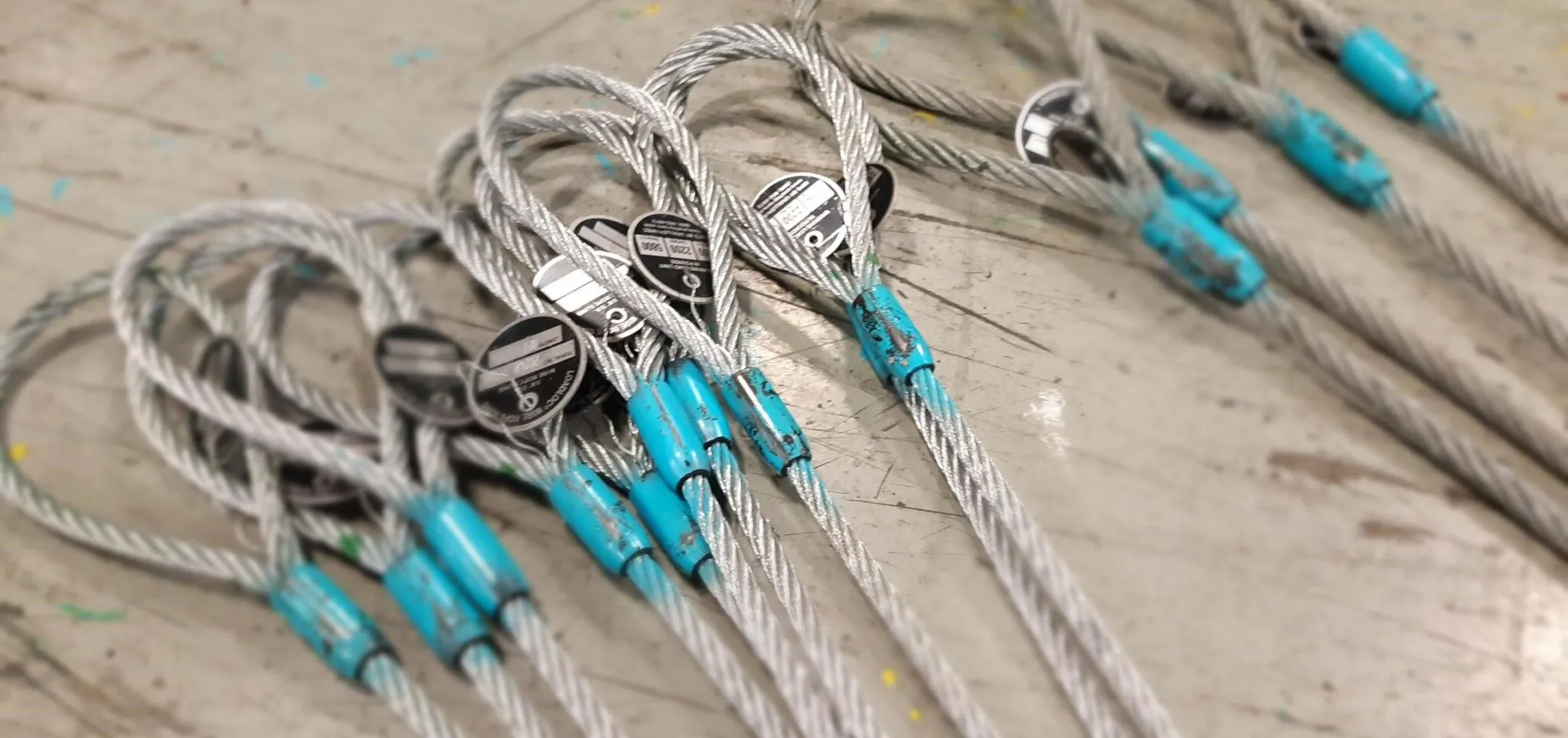Lifting Sling Care 101: How to Properly Maintain & Store Lifting Slings
Lifting Sling Care 101: How to Properly Maintain & Store Lifting Slings
Lifting slings are indispensable tools across various industries, facilitating the safe and efficient movement of heavy loads. However, the performance and longevity of these crucial equipment pieces rely heavily on the proper care and storage they receive. In this comprehensive guide, we will delve into the realm of lifting sling care, exploring essential practices that will ensure your lifting slings remain in peak condition. From inspection routines to ideal storage methods, we’ve got you covered. Let’s dive into the key aspects of lifting sling care to keep your equipment and operations running smoothly.

Understanding Lifting Slings
Before we delve into lifting sling care, it’s essential to grasp the various types of lifting slings available. These slings come in diverse materials, including nylon, polyester, chain, and wire rope, each having distinct characteristics and care requirements. For instance, nylon and polyester slings are vulnerable to UV damage, while chain and wire rope slings need regular lubrication.
Inspection and Cleaning
Regular inspections are the bedrock of proper lifting sling care. Inspect your slings both before and after each use, vigilantly checking for signs of wear, damage, or distortion. Pay meticulous attention to:
- Cuts, tears, or snags.
- Broken or damaged stitching.
- Distorted hardware, such as hooks or shackles.
- Fading or discoloration, which could indicate UV damage.
- Signs of corrosion on metal components.
- If any issues are identified during inspection, promptly take the sling out of service and follow your organization’s procedures for repair or replacement.
Cleaning also plays a pivotal role in maintenance. Clean slings as necessary, eliminating dirt, debris, and contaminants that could compromise their integrity. Employ a mild soap and water solution, steering clear of harsh chemicals that may harm the sling material.
Storage Best Practices
- Proper storage is essential to prevent unnecessary wear and tear on your lifting slings. Adhere to these storage guidelines:
- Dry Storage: Always store slings in a dry, clean area to thwart moisture-related issues like mold and mildew.
- Avoid Sunlight: Shield slings from direct sunlight and UV radiation to avert material degradation.
- Hang or Coil: When not in use, hang slings on racks or coil them neatly to forestall kinks and tangles.
- Protect from Sharp Edges: Keep slings far from sharp edges, corners, or abrasive materials that can induce damage.
- Label and Organize: Properly label and organize slings to ensure the right one is used for each application, mitigating undue strain.
Lubrication for Metal Slings
For lifting slings constructed of metal, regular lubrication is paramount to stave off corrosion and guarantee smooth functionality. Employ an appropriate lubricant tailored to your specific sling type, and adhere to these steps:
- Inspect Before Lubrication: Prior to applying lubricant, inspect the sling for any signs of damage or wear.
- Clean Thoroughly: Remove all dirt or debris from the metal components using a wire brush or cloth.
- Apply Lubricant: Distribute a suitable lubricant to all moving parts and metal surfaces, taking care not to over-apply, as excessive lubricant may attract dirt.
- Operate the Sling: After lubrication, exercise the sling a few times to ensure the lubricant spreads evenly.
Documentation
Maintaining precise records of sling inspections, maintenance activities, and usage is imperative for safety and regulatory compliance. Keep a detailed log encompassing inspection dates, any repairs or replacements, and usage particulars. This documentation aids in tracking sling lifespan, identifying potential concerns, and ensuring compliance with industry standards.
Training and Education
Finally, invest in training and educating your team on the nuances of proper lifting sling care. Ensure that employees handling lifting slings comprehend the significance of routine inspections, cleaning routines, and appropriate storage practices. Consistent training serves as a preventive measure against accidents and contributes to prolonging the life of your slings.
In Summary
Proper lifting sling care is not merely a safety requirement; it also serves as a cost-effective measure. By adhering to the guidelines outlined in this comprehensive guide, you can extend the lifespan of your lifting slings, diminish the risk of accidents, and assure the continued success of your operations. Remember, well-cared-for slings are safe and reliable slings. Make lifting sling care a top priority in your workplace, and your lifting equipment will consistently serve you for years to come.
——————————————————————————————————————————————
The Hercules Group of Companies encompasses a wide portfolio of products and services across 7 diverse companies.


